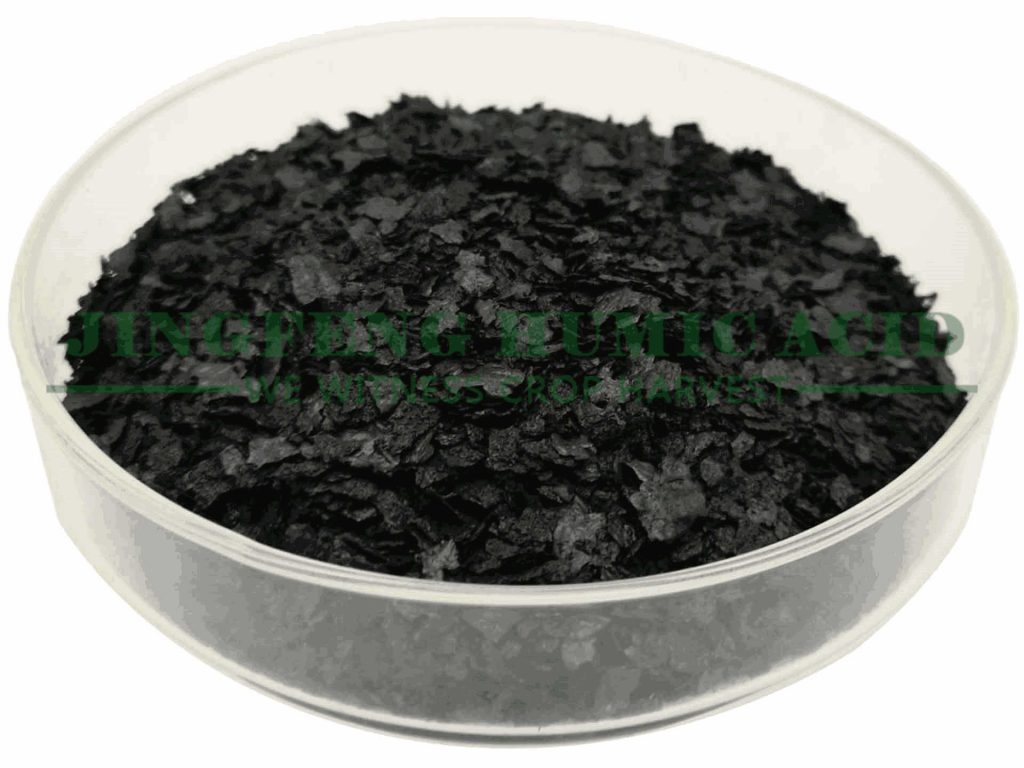
Farmers are continually exploring methods that enhance crop production using amino acid fertilizers while preserving environmental health in the quest for sustainable agriculture. One such method gaining prominence is the use of amino acid fertilizers. These organic compounds, fundamental to plant growth and development, offer a natural alternative to traditional chemical fertilizers. By integrating amino acid fertilizers into farming practices, we can improve soil fertility, boost crop yields, and promote ecological balance. This comprehensive guide delves into the benefits and application of amino acid fertilizers, providing practical insights for those who aim to adopt more sustainable agricultural practices.
Understanding Amino Acid Fertilizers
Amino acids are the building blocks of proteins and play a crucial role in various physiological processes within plants. They are involved in the synthesis of enzymes, hormones, and chlorophyll, all of which are essential for plant growth and development. Amino acid fertilizers are derived from natural sources such as plant residues, animal by-products, or microbial fermentation processes. These fertilizers provide plants with readily available amino acids, enhancing nutrient uptake and overall health. For those looking to further boost soil health and plant vitality, incorporating a humic acid supplement can be highly beneficial. If you’re searching for humic acid near me, local agricultural suppliers or garden centers often carry these products, making it easy to integrate humic acid into your soil management practices for improved nutrient availability and soil structure
Composition and Types of Amino Acid Fertilizers
Amino acid fertilizers can be categorized based on their source and composition:
- Plant-Based Amino Acid Fertilizers: Derived from plant residues through hydrolysis, these fertilizers are rich in specific amino acids beneficial for plant growth.
- Animal-Based Amino Acid Fertilizers: Produced from animal by-products like fish waste or bone meal, these fertilizers contain a broader spectrum of amino acids.
- Microbial Fermentation-Based Amino Acid Fertilizers: Utilizing microbial processes to break down organic matter, these fertilizers offer a sustainable and efficient source of amino acids.
Mechanism of Action
Amino acid fertilizers function by:
- Chelation of Nutrients: Amino acids can chelate essential nutrients, making them more available for plant uptake.
- Stimulation of Metabolic Processes: They serve as precursors for the synthesis of vital compounds, enhancing metabolic activities.
- Improvement of Soil Microbial Activity: Amino acids promote the growth of beneficial soil microorganisms, contributing to soil health.
Benefits of Amino Acid Fertilizers in Sustainable Agriculture
The integration of amino acid fertilizers into sustainable agriculture offers numerous advantages:
Enhanced Nutrient Uptake
Amino acids facilitate the chelation of essential nutrients such as iron, zinc, and manganese, improving their availability and absorption by plants. This process leads to more efficient nutrient utilization and can reduce the need for synthetic fertilizers.
Improved Soil Health
The application of amino acid fertilizers enriches the soil with organic matter, fostering a conducive environment for beneficial microorganisms. This enhancement in microbial activity contributes to nutrient cycling, soil structure improvement, and overall soil fertility. Additionally, the incorporation of humic soil conditioner further amplifies these benefits by enhancing the soil’s water retention capacity, improving nutrient availability, and promoting the stability of soil aggregates. Together, amino acid fertilizers and humic soil conditioners create a synergistic effect, optimizing soil health and supporting sustainable plant growth.
Increased Plant Growth and Yield
By providing essential building blocks for protein synthesis, amino acid fertilizers promote robust plant growth, leading to higher yields and improved crop quality.
Enhanced Stress Resistance
Amino acids such as proline play a pivotal role in helping plants cope with abiotic stresses like drought, salinity, and extreme temperatures. Their presence in fertilizers can bolster a plant’s resilience to adverse environmental conditions.
Environmental Sustainability
The use of amino acid fertilizers aligns with sustainable agricultural practices by reducing reliance on chemical fertilizers, minimizing nutrient runoff, and lowering the environmental footprint of farming activities.
Application Methods
Proper application of amino acid fertilizers is crucial to maximize their benefits. The following methods are commonly employed:
Soil Application
Incorporating amino acid fertilizers directly into the soil ensures that nutrients are readily available to plant roots. This method is particularly effective during soil preparation or as a side-dressing during the growing season.
Foliar Application
Spraying amino acid solutions onto plant leaves allows for rapid absorption of nutrients. Foliar application is beneficial during critical growth stages or when soil conditions limit nutrient availability.
Seed Treatment
Soaking seeds in amino acid solutions before planting can enhance germination rates and early seedling vigor.
Integration into Irrigation Systems
Integrating amino acid fertilizers into irrigation systems (fertigation) ensures uniform distribution and efficient nutrient uptake.

Integrating Amino Acid Fertilizers into Farming Practices
To fully harness the potential of amino acid fertilizers, they should be integrated into a holistic farming approach:
Complementing Organic Amendments
Combining amino acid fertilizers with other organic amendments like compost or green manure can enhance soil fertility and structure. The addition of a humate supplement further enriches this combination by increasing the soil’s cation exchange capacity (CEC), improving nutrient retention, and stimulating microbial activity. This integrated approach, which includes amino acid fertilizers, compost, green manure, and humate supplements, creates a robust soil ecosystem that promotes sustainable plant growth, enhances soil health, and ensures long-term agricultural productivity.
Crop Rotation and Diversity
Implementing crop rotation and diversifying plant species can improve soil health and reduce pest and disease pressures, complementing the benefits of amino acid fertilizers.
Conservation Tillage
Adopting conservation tillage practices preserves soil structure and moisture, working synergistically with amino acid fertilizers to promote plant growth.
Integrated Pest Management (IPM)
Enhancing plant health with amino acid fertilizers can reduce susceptibility to pests, supporting IPM strategies that minimize chemical pesticide use.
Potential Challenges and Solutions
While amino acid fertilizers offer numerous benefits, certain challenges may arise:
Cost Considerations
Amino acid fertilizers can be more expensive than conventional fertilizers. However, their efficiency and the long-term benefits to soil health can offset the initial investment. Exploring bulk purchasing or local production can also reduce costs.
Proper Storage and Handling
To maintain their efficacy, amino acid fertilizers should be stored in cool, dry conditions and handled according to manufacturer guidelines with care:
Storage Conditions: Store fertilizers in their original containers in a cool, well-ventilated area, protected from direct sunlight, heat, and frost. Ensure that the storage area has an impermeable floor with secondary containment to prevent environmental contamination.
Separation from Other Materials: Keep fertilizers away from food, drink, animal feed, and incompatible substances to prevent cross-contamination.
Handling Precautions: Follow occupational health and safety guidelines during handling. Avoid smoking, eating, or drinking in the application area, and use appropriate personal protective equipment as recommended.
Determining Appropriate Application Rates
Application rates for amino acid fertilizers can vary based on crop type, soil conditions, and specific product formulations:
- General Guidelines: For instance, soybean meal, a source of amino acids, is typically applied at rates ranging from 1 to 10 pounds per 100 square feet, with one application per crop cycle. However, it’s essential to note that soybean meal can inhibit germination of small seeds.
- Specific Crop Recommendations: Research has shown that applying 1.8 kg of amino acid water-soluble fertilizer per plant can improve fruit diameter and fresh weight in pepper plants, suggesting that lower concentrations may be more effective for certain crops.
- Consult Product Labels: Always refer to the manufacturer’s guidelines for specific application rates and methods tailored to particular crops and soil conditions.
Case Studies and Research Findings
Several studies have highlighted the positive impact of amino acid fertilizers on crop performance:
- Pepper Plants: A study demonstrated that applying 1.8 kg of amino acid water-soluble fertilizer improved fruit diameter and fresh weight in pepper plants compared to higher application rates.
- General Crop Performance: Exogenous application of amino acids has been shown to improve plant growth and productivity in various crops compared to unfertilized controls.
- Stress Mitigation: Foliar application of amino acids has been found to mitigate the negative effects of salinity on crops such as tomatoes, enhancing their resilience under stress conditions.
Conclusion
Integrating amino acid fertilizers into sustainable agricultural practices offers a promising pathway to enhance crop yields, improve soil health, and promote environmental sustainability. By understanding their benefits, application methods, and potential challenges, farmers can make informed decisions that align with both productivity goals and ecological stewardship.









